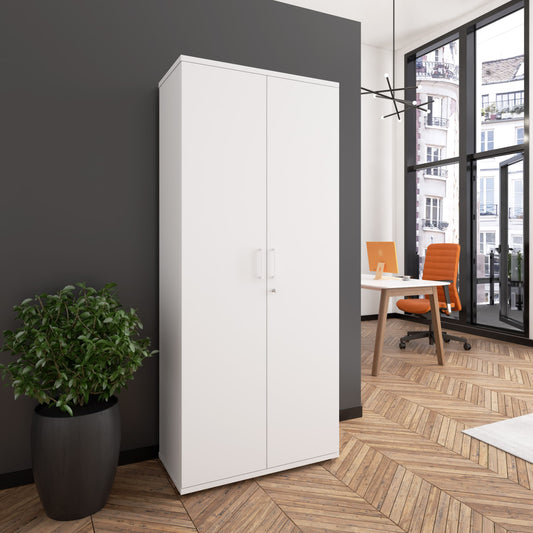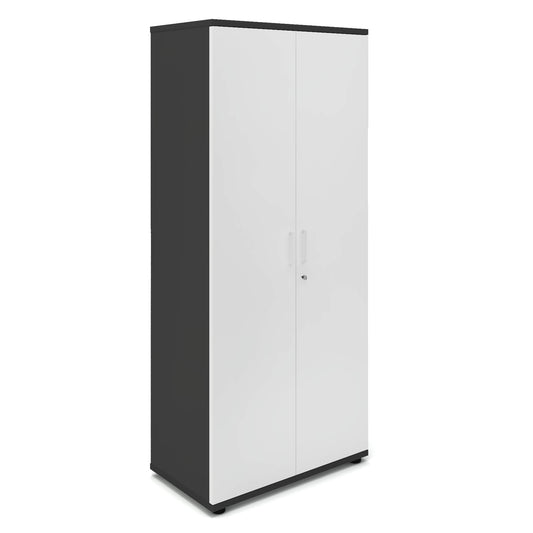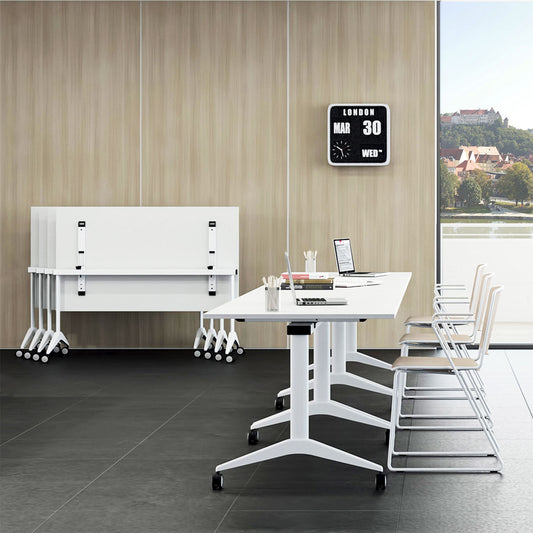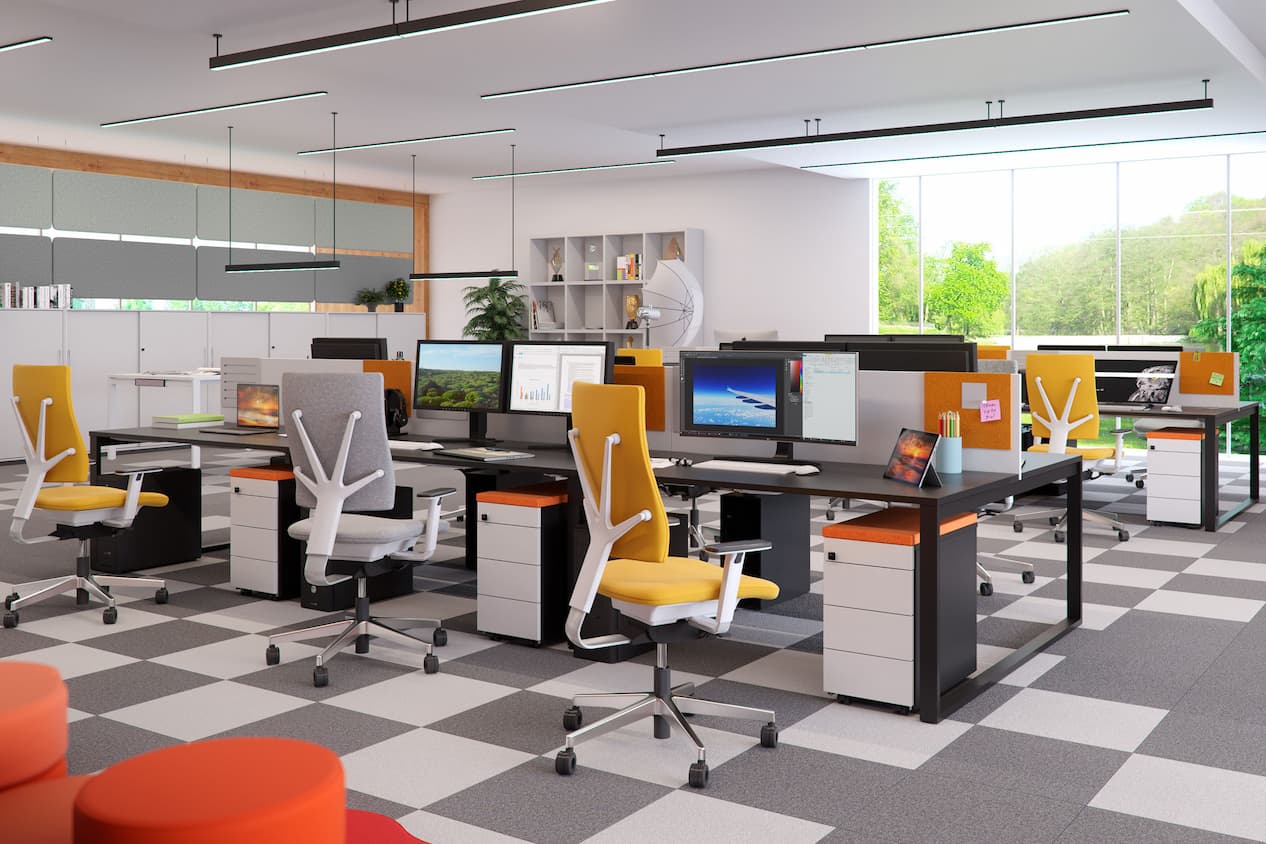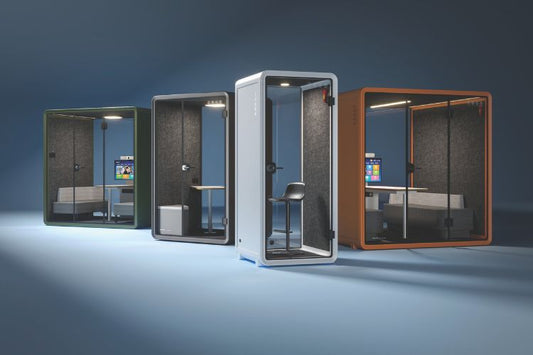Which hybrid working models are there?
If a company advertises the term "hybrid office" in its job advertisements, this can mean a lot, since hybrid work has many gradations. With this modern, mostly digital work model there are two dimensions: Place of work and working hours.
In fact, however, the place of work on the type of hybrid work decides. There are the following gradations:
- "Office First": The office remains the preferred place of work. Home office and similar models are only available in exceptional cases.
- Partially flexible: The employees have the opportunity to work remote on a few days a month.
- Full flexible: All employees are completely flexible in the choice of their place of work
- "Remote First": The home office or the telephoto workplace is the standard workstation. Meeting in the office only takes place in exceptional cases.
If this is supplemented by working hours, the following variants are added:
- Fixed working hours: There are fixed requirements when and how many hours a day is being worked on.
- Partial flexible: Employees can make their working hours flexible, for example via a flexitime model.
- Fully flexible: When and sometimes for how long the employees work, this work model has no relevance for the company.
How do employees benefit from the hybrid work model?
Work-life balance
First bring the kids to school, then start with work emails and a round yoga in the favorite studio at noon: thanks to remote work, personal needs are easier to integrate into everyday work. In addition, long commuting times are eliminated in the office, which makes time for leisure activities.
Cost savings
Less face -to -face work also means fewer expenses for employees. ABOK costs for public transport, gasoline costs and the stressful search for parking space or expensive food in the city - all of these expenses are partly eliminated by remote work. In addition, the location independence of living outside of the expensive metropolitan areas enables location.
Trust & satisfaction
A lot of trust is shown to the employees because they work in the home office without direct “supervision” of their superiors. An additional advantage is an individually furnished workplace and the possibility of wearing comfortable clothing. This increases satisfaction and leads to more productivity overall.
What are the advantages of hybrid work for companies?
For a long time, the assumption was that workers mainly benefit from flexible work models. However, Corona pandemic and the compulsion to the home office have shown that companies also benefit greatly.
Cost savings for companies
Logical - fewer employees in the office, less costs. Surveys under company management show a saving potential of over 20 percent. It is no longer necessary to keep a permanent job for every employee, which requires less office space in the long term. Expensive offices in central locations can be reduced or completely abandoned.
Employer branding
"Flexibility before salary" - the possibility of working flexibly will be an important criterion for employer branding and the extraction of new employees in the future. Companies outside the cities have easy access to specialists. Thanks to Remote Work, qualified, young talents who want to live in the country are also a potential target group.
productivity
Contrary to the widespread prejudice that productivity would decrease through remote work, practice often shows the opposite. Many managers even report an increase in productivity. With less distraction and the greater satisfaction of the employees, the work is done more focused.
Sustainability & strengthening rural areas
Last but not least, the general social advantages of Hybrid Work should also be mentioned. The elimination of pendulum routes to the place of work and unnecessary business trips-sometimes also through domestic flights-not only saves time, nerves and money, but also reduces CO2 emissions. Hybrid's work thus makes a valuable contribution to climate protection.
Remote Work also increases flexibility when choosing the place of residence. Specialists are no longer forced to go to qualified work in big cities or metropolitan regions. This leads to a stronger mixing of society and strengthening rural areas.
Important requirements for hybrid work
Of course, there are not only advantages at Hybrid Work. It is worth taking a closer look at the challenges and potential disadvantages.
Higher coordination effort
Managers face the challenge of coordinating their teams' work when they work in different places and possibly at different times. Regular discussions with the employees are important to recognize overload or misunderstandings at an early stage.
Less social exchange among colleagues
If colleagues and entire teams no longer see each other personally, this can affect team dynamics. Here, for example, monthly presence days, on which everyone is in the office. Team events can also strengthen the "we feeling".
Adapted office concepts and home office furniture
In the hybrid work model, offices are no longer just jobs, but also places of encounter and exchange. That is why a suitable room layout is important - with retreat, good acoustic protection and ergonomic furniture for healthy and productive work. We would be happy to support you in designing your hybrid office!
Let's implement your hybrid office!
We offer you the right facility for every room - precisely tailored to your needs and your budget, including a well thought -out planning concept.






